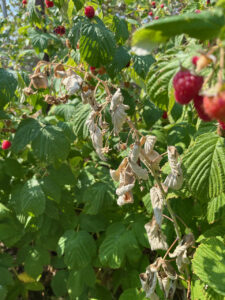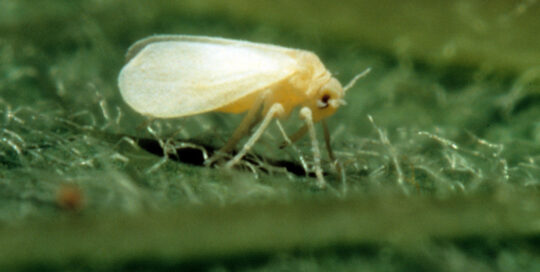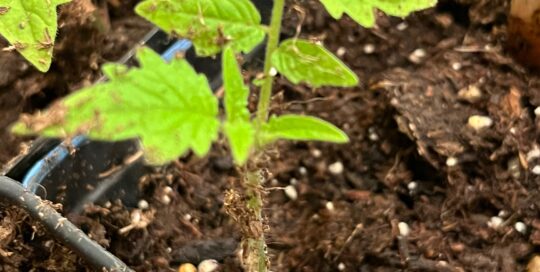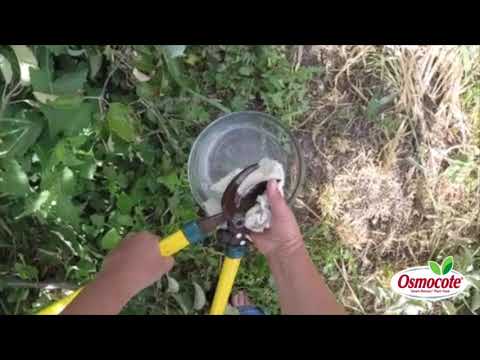Berry Diseases and How to Remedy Them
Views: 901

This is a banner year for raspberries. With plenty of rain this spring and a warm summer they’re producing a large amount of huge, luscious berries. Granted, I have to pick early in the morning to avoid the yellow jackets, but despite paring down the raspberry patch, we’ll have plenty to make jam. The only puzzlement is a few canes here and there are wilting and dying for no apparent reason so I thought it fitting to looking into berry diseases and what we can do about them.
Growing Raspberries on a Trellis
What’s that Fuzz?
One of the most devastating berry disease is Botrytis cinerea, also called gray mold. Fungal infection might start out with a white appearance, but quickly turns gray and encompasses the leaves, flowers and fruits. The thing is, Botrytis is everywhere. It only becomes a problem when the plants might be stressed and there is a site of infection. This is often a wound in the plant or a cut of some sort. It also thrives in humid conditions, which is why creating good air circulation is a valuable tool in its control.
If you notice this gray mold on any of your berries, start by removing the affected areas. Be sure to clean your clippers in between each cut, although, if possible, remove the entire plant. If you’re concerned about it. spreading to other plants, you could use a fungicide on the unaffected ones to prevent further spread.
Berry Disease Causing Root Rot
Even though the raspberries are doing well, I have a few canes dying. There aren’t many, but it’s enough to take notice. There a couple of possible different reasons for this. The first potential culprit is root rot. Caused by the Phytophthora spp. fungi it could be due to any of the eight species found in the soil, particularly since we had such a wet early summer.
The condition typically emerges with higher precipitation amounts, along with inadequate drainage. It normally exhibits symptoms when the weather warms up. One diagnostic tool is digging up the plant. If the crown and roots are more reddish in color, there’s a good chance it’s suffering from this fungal infection.
If this is a limited issue and you want to protect other plants, consider using the fungicide Ridomil Gold in the soil to reduce the risk to the other berry plants. Another option, particularly if this is a perpetual problem, is to choose a resistant variety.
Raspberry Cane Borers
If the tips of the canes wilt and die, look for a couple of rings about a half-inch apart around the stem below the affected area. If you see them, it’s raspberry cane borers, a beetle that spends its life among raspberries.
Around June, the adults emerge and the female lays eggs in between those puncture rings within the canes of the raspberry plants. After the eggs hatch, the larvae feed upon the plants often working their way downward inside the cane. Many times, they’ll overwinter in the upper portion of the cane.
This is one reason I love the fall bearing raspberries I grow. Every fall or spring, I cut back all of the canes, which eliminates any of the potential overwintering larvae. While there are pesticides to eliminate cane borers, the best course of action is to remove the infected canes.
Raspberries are one of those fruits that are easy to grow for just about anyone and reward us with a bounty of berries throughout the summer. Just keep your eyes open for a few of the more common diseases or pests to ensure they keep producing for years.
Meet Amy Grisak
Amy is a freelance author and photographer in Great Falls, MT who specializes in gardening, foods, and sustainable agriculture. She provides information on every kind…
Amy's Recent Posts

Watch Out for Silverleaf Whiteflies








